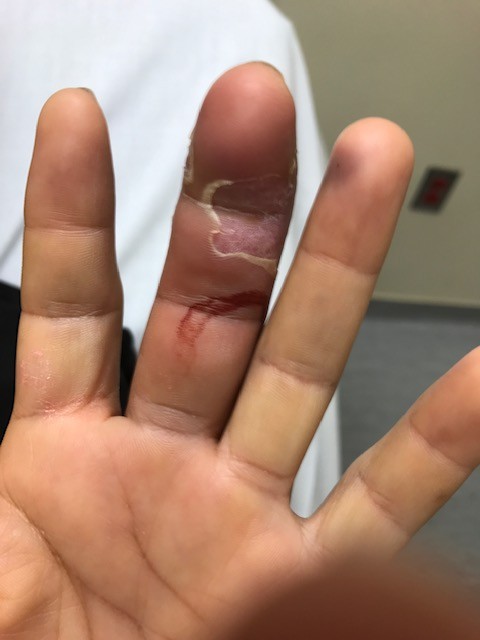🔑 Key Learning
-
Surgical emergency caused by infection of the flexor tendon sheath in the hand.
-
Presents with the classic Kanavel’s signs.
-
Requires urgent surgical intervention and antibiotics to prevent tendon necrosis and permanent hand dysfunction.
🧬 Pathophysiology
-
Infection of the synovial sheath that surrounds the flexor tendons of the fingers.
-
Most commonly due to penetrating trauma (e.g. bite, puncture wound), or haematogenous spread.
-
Common pathogens: Staphylococcus aureus (including MRSA), Streptococci, and Gram-negative bacilli.
-
Infection leads to increased pressure, vascular compromise, and potential tendon necrosis.
👀 Clinical Features
-
Pain, swelling, and loss of function in the affected finger.
-
Classically presents with Kanavel’s Four Cardinal Signs:
-
Finger held in flexion
-
Fusiform swelling (uniform swelling along the finger)
-
Tenderness along the flexor tendon sheath
-
Pain on passive extension of the digit
-
May also be systemic signs: fever, malaise.
 Figure 226: Flexor tenosynovitis. Jonrako, CC BY-SA 4.0.
Figure 226: Flexor tenosynovitis. Jonrako, CC BY-SA 4.0.
💊 Management
-
Urgent referral to hand surgery/plastics team if Kanavel signs are present.
-
Surgical irrigation and drainage of the tendon sheath is required to evacuate pus and decompress the sheath.
-
Empirical IV antibiotics: Flucloxacillin or co-amoxiclav
📝 Exam Clues & Clinchers
-
Penetrating trauma to finger followed by pain and fusiform swelling
-
Classic Kanavel signs — especially pain on passive extension

